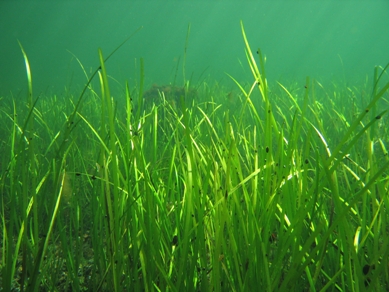|
You are not Logged in! Log in to check your messages. |

|
|
Check todays hot topics |
Web2Project Sign in
SEAOX project

SEAOX - Using acoustics for monitoring the metabolism of marine ecosystems
SEAOX is an FCT (Portuguese Foundation for Science and Technology) funded project that aims at using the properties of sound propagation in ocean water as a proxy of the amount of oxygen bubbles to monitor the photosynthetic production of marine plants. Unlike other methods that simply provide local oxygen measurements (water analysis, oxygen probes), acoustic based methods can offer integral information over a given area and time interval. This project is funded by FCT with a total amount of 197k Euro for three years. Starting date: November 1st, 2015. Partnership: CINTAL (Coordinator) and CCMAR. People involved from CINTAL: P. Felisberto.
Abstract:
In the underwater environment, the sound plays a major role in remote sensing since sound waves can propagate along wide ranges, whereas light and electromagnetic waves are highly attenuated and propagate only along very short distances. When a sound waveform propagates through the aquatic environment, it is influenced by the concentration of oxygen bubbles in such way that changes in the concentration of bubbles originate changes in attenuation and sound speed (just to refer the most remarkable). Sound attenuation may thus be used as a proxy of the amount of oxygen bubbles in the water to monitor the photosynthetic production of marine plants. Unlike other methods that simply provide local oxygen measurements (water analysis, oxygen probes), acoustic based methods can offer integral information over the propagation paths between the source and the distant receiver by using a single system, thus allowing the monitoring of average oxygen productivity of large coastal areas. This proposal aims to develop an acoustic based method to monitor the oxygen production of seagrass meadows and to estimate the metabolism of seagrass dominated ecosystems. Despite accounting for only a relatively small area (∼0.1 % of the coastal ocean), seagrass dominated ecosystems are an important component of the coastal ocean for the valuable ecological goods and services they provide to the system [Costanza97], and are among the most productive biomes on earth [Duarte10]. Yet, seagrasses are declining worldwide and the need for integrative management practices is emerging [Waycott09]. In October 2011 at the STARESO marine station of the University of Liege, Corsica, researchers from CINTAL and CCMAR have conducted an acoustic experiment in a meadow of the seagrass Posidonia oceanica, as part of a multidisciplinary experiment devoted to the study of seagrass production at different spatial and temporal scales [Mazzuca13]. The experiment showed the potential usage of acoustics as a proxy for the dynamics of seagrass O2 metabolism at ecosystem level [Felisberto15]. Acoustic data revealed the diel dynamics of O2 production as bubbles in seagrasses ecosystems, which results in relevant underestimations of the system productivity by traditional methods that measure dissolved O2 in the water column. Combining acoustic with other techniques will allow developing a robust, and accurate system for estimating in situ the productivity of marine systems. Furthermore, preliminary analysis of underwater noise gathered in the same meadow showed that the variability of the ambient noise power and directivity was correlated with measurements of dissolved O2 by optodes [Felisberto14]. The results suggest that acoustic noise can be used as an indicator for the photosynthetic activity of the meadow. The challenge of the current proposal is to expand that work, by developing and testing cost effective acquisition system and signal processing methods to quantify the oxygen productivity in the aquatic environment. In order to do this, it is necessary to assess the process of oxygen transfer from the plants to the water, the model of acoustic propagation in seagrass beds, the system configuration, the methods to filter out the influence of undesired parameters in the received signal (e.g. temperature changes, noise, tide), and to characterize the environmental and biological noise. The use of natural noise (passive system) as a proxy of the photosynthic activity will be also investigated. The project will also provide guidelines for the system setup and data interpretation as to facilitate the acceptance of the system among the marine biologists’ community. The project participants have extensive expertise in the assessment of the metabolism of coastal seagrass systems (CCMAR) [Santos04,Silva09], and in the development of acoustic monitoring methods and systems (CINTAL) [Santos10,Felisberto13,Zabel11]. In addition, the participants have already collected an extensive set of acoustic data and oxygen measurements. In a first stage of the project, the available data sets will be complemented by experiments under controlled conditions in mesocosms to support the calibration of the methods applied to the acoustic data set. In a second stage, the optimized methods will be tested and calibrated on seagrass meadows at STARESO. Finally, the method will be applied to monitor the oxygen productivity of seagrass meadows in Ria Formosa lagoon, South Portugal. The acoustic system we aim to develop for the instantaneous quantification of oxygen production will allow the assessment of data in real time, as it can be connected to shore and requires only a transmission link to the receiver. We believe that this innovative acoustic method can be used to accurately quantify ecosystem metabolism and that it will represent an important tool for monitoring and managing the production of coastal areas, integrating spatial and temporal scales.


